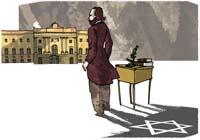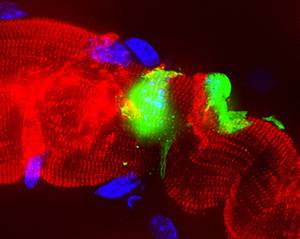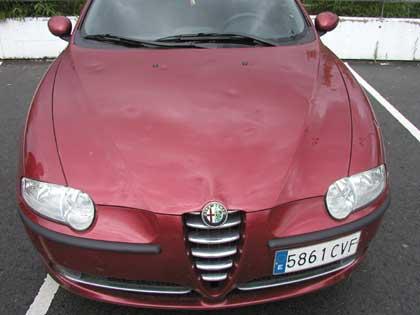Robert Rema, Shadow Jew
2010/04/01 Etxebeste Aduriz, Egoitz - Elhuyar Zientzia Iturria: Elhuyar aldizkaria

One of the great biological discoveries was made in an old Berlin chamber, that of Robert Remake. Remake had its laboratory: a simple microscope and little more. This was enough to see how cells form. Faced with the convictions of the time, he discovered that the cells are formed by the division of other cells.
When in 1838 he earned a doctorate in medicine at the Friedrich Willhelm University in Berlin (specialty of neurology), Remake's dream was not to investigate in his chamber. I wanted to be a university professor. But Rema was Jewish and the Jews had no right to it.
Faced with this situation, he was about to leave for Paris, but his friend Alexander von Humboldt convinced him to take away the idea and continue his research in Berlin. The former director of his thesis, Johannes Müller, offered him a position of assistant in his laboratory. It was an unpaid job, as the university was unthinkable to pay the Jews, and the workplace was not the University, but its old chamber.
To earn a living, he worked as a private doctor and taught microscopy. And the remaining time passed him to his microscope. Although initially devoted to research on the anatomy of the nervous system, the topic of cell creation attracted him quickly. The theme was boiling: Matthias Schleiden and Theodor Schwann began laying the foundation for cell theory.
In 1837 Schleiden claimed that plants were made up of cells and that the new cells formed amorphic matter in their nuclei. That same year, when Schwann and Schleiden had dinner together, while talking about plant cells and their nucleus, Schwann realized that he had also seen very similar structures in the tissues of the tadpoles. And, as Schleiden said, those nuclear cells were basic units of plants, did the same happen in animals? Two years later, Schwann published a book on the microscopic structure of animals and plants, in which he affirmed that all living beings are made up of cells formed from inert matter, through a process similar to that of cellular crystallization.
All this lived very closely. In fact, Schwann was also a member of Müller's laboratory. But Remake didn't see this question of crystallization of cells so clear and went into research. For this, he observed in a place where the cells were constantly forming: fertilized chicken eggs. Microscopically analyzing the red blood cells of the embryos of the eggs, he discovered that only a few of those spherical cells had different forms. He focused on them and realized that they were cells that were dividing into two. After numerous observations, he also identified the phases of cell division. He published his results in 1841.
This work was not widely disseminated. Even when he was taught to his friend Rudolf Virchow, also from the Mülle laboratory, it seemed nothing great: it would probably have been a curiosity of the red blood cells of the chicken embryos, nothing extraordinary. But Remake knew it could be much more than that and started looking for more evidence.
Meanwhile, he continued to struggle to be a teacher. When in 1840 the throne of Prussia was conquered by Gil IV of Frederi, he thought things could change. With this hope, he asked the Minister of Education in 1843, but the answer was negative. Then, with the help of Humboldt and the approval of Müller, he asked the king to give him a position at the university. It was also in vain.
Three years later he appeared in a square at the Charité University Clinic in Berlin. By then he was already quite prestigious for the work he was doing in embryology, but the square was handed over to his friend Virchow.
Finally, in late 1847, with the help of Humboldt and Schönlein, the king's doctor, he obtained a position of classes at the University of Berlin. However, Rema was not happy because he was not a real teacher position, but a much simpler position. The first class taught by Remake was reflected in all newspapers in the area, the first time a Jew taught at the University of Berlin.
The fight, the investigation was not abandoned by Remake. Among his works is the best known today: he identified and named the three embryonic layers (ectoderm, mesoderm and endoderm) and studied which one hundred of these embryonic layers were produced in the embryos of hens. And he also advanced with the topic of cells: tracking frog eggs, he obtained new tests in favor of cell division. In fact, he saw how from that single initial cell two were formed, four of them, eight of them; thus, first a cup of shoe and finally the whole frog developed.
In 1850, in the first part of the treatise on its embryology, it was stated that it was possible to constantly divide chicken egg cells. And he published in 1852 what he saw in frog eggs. The following year he said: "It is very likely that all animal cells are formed by the continuous division of embryonic cells."
But these new ideas were not accepted. Not at least until Virchow made them his own. He also researched this subject, but for many years he was a supporter of the ideas of Schleiden and Schwann: "the whole organic structure comes from the amortic matter," he wrote around 1850. However, in the end he saw that Remake was right. In 1855 Virchowk published his ideas in a medical book. And he also made famous a round phrase in Latin: omnis cellula and cellula, all cells come from cells.
In that book Virchow did not even mention Rema. And the discovery became the owner of Virchow. Still today, in most of the texts appear Virchow and his phrase, more than the work of Jewish Rema.

Gai honi buruzko eduki gehiago
Elhuyarrek garatutako teknologia





